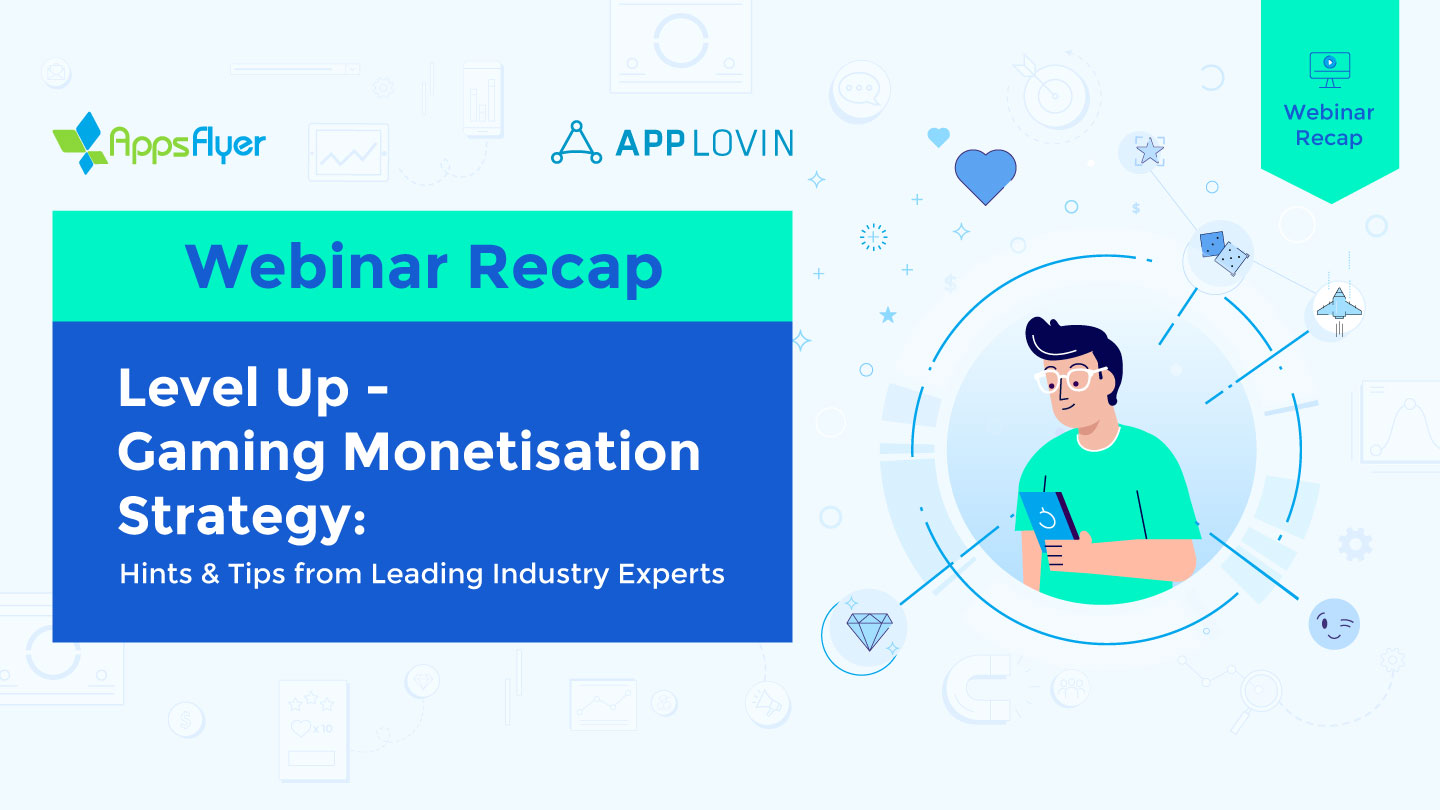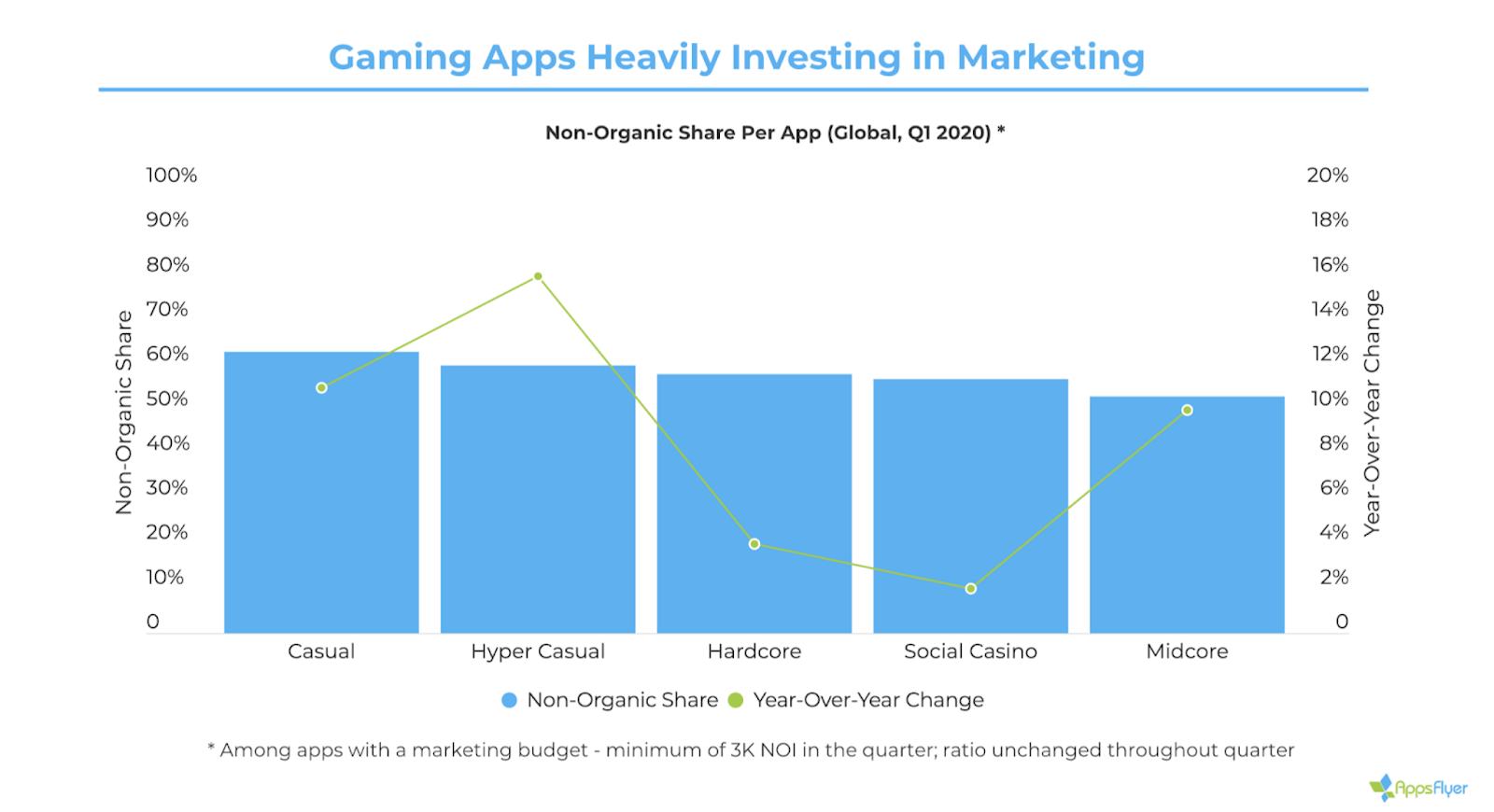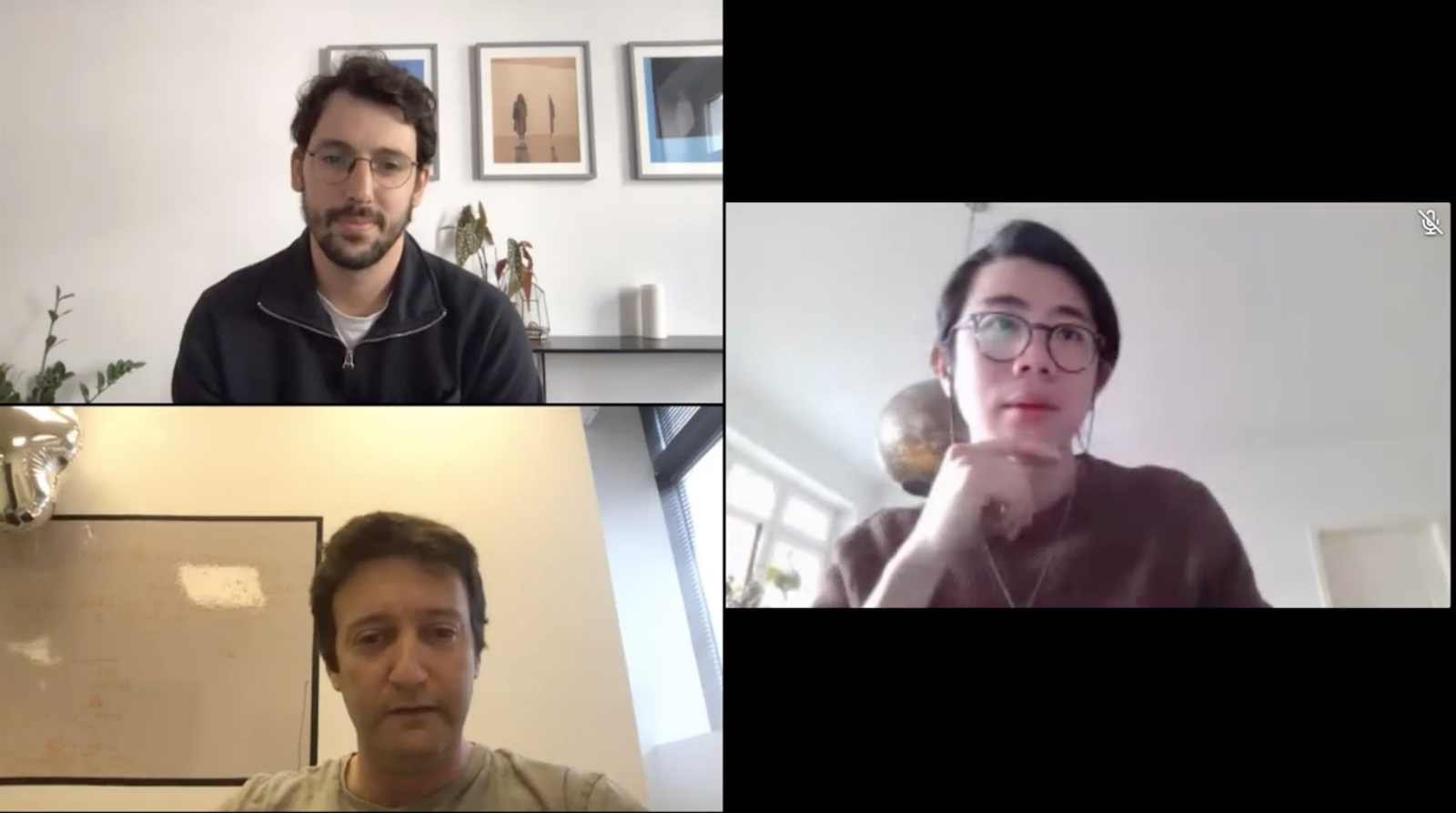Industry News & Events, Monetization
Hybrid Monetization Best Practices From Leading Industry Experts
May 1, 2020

Industry News & Events, Monetization

Earlier this month, we co-hosted a monetization webinar collaborating with our partner AppsFlyer. In attendance was Guy Tomer, Chief Operating Officer at CrazyLabs and Arthur Chin, Senior User Acquisition Manager at Wargaming and Daniel Tchernahovsky, Managing Director, EMEA at AppLovin who shared their perspectives on the latest gaming trends as well as best practices on how to leverage a hybrid monetization model to boost revenue. Read on for our recap of the key takeaways to learn from these industry leaders.
Trends in Gaming Spend

By looking at the last quarter’s data across 38 billion app installs, AppsFlyer has put together insightful data about the state of mobile gaming and its continued growth, especially in the casual, hyper-casual, and mid-core categories.
Gaming apps are heavily invested in marketing right now, and are allocating more budget to paid media, which has resulted in organic and non-organic installs rising in the past six weeks. This spiked when the shelter-in-place orders went into effect and many people started working from home. It was also reported that developers saw a huge increase in the length of gaming sessions.
Looking at the growth possibilities for casual gaming, there are huge opportunities globally across North America, Europe, Asia, and the Middle East. In the competitive hyper-casual market, the majority of growth is happening in the US, but also showing signs of taking off in markets across Europe and Asia as well.
How hybrid monetization works for hyper-casual and mid-core devs

“In-app purchases (IAP) are essential to the mid-core game monetization model, but devs are gradually opening up to in-app advertising (IAA) which could work well for a large segment of non-paying users,” said Chin. “We want to encourage users to visit the in-game store — but make sure it offers something essential, is easy to find and sort, and has the right motivation hooks to encourage the user to purchase.”
One of the key takeaways was that mid-core devs with a long history of only monetizing through in-app purchases, are now shifting and now leveraging in-app advertising to further monetize their games.
Chin confirmed this trend and emphasized that the placement of ads in this type of game is absolutely crucial. In some cases, this is typically reserved to monetize non-paying users.
Some of Wargaming’s best practices for in-app purchases are ensuring the developer is providing players with a unique experience. It’s smart to keep outside factors like holidays in mind to offer in-game promotions and bundles, which can help build a balanced in-app economy and show the value of each purchase to motivate gamers to keep coming back.
Tomer shared that many games at CrazyLabs are already using hybrid monetization models. His take was that hyper-casual games are more focused on in-app advertising, but should consider leveraging in-app purchases as well. With CrazyLabs’ portfolio of lifestyle games, they focus on in-app purchases but also look for ways to integrate ads on the condition it doesn’t detract from purchases.
“Casual runner games are an exemption to this rule. Most of the revenue for these games come from ads, and only use in-app purchase and subscriptions for highly engaged players to allow them to progress faster in the game and access additional content,” said Tomer.
“When approaching in-app advertising, the first thing to consider is which ad format to use — the main three we use are banner, interstitial, and rewarded video,” added Tomer. “Based on our experience, users have a higher tolerance for ads — more now than before — and developers should try as many placements as they can to see what works.”
Mediation networks and the future of monetization
Once a developer or studio decides on their best practices for ad placement, the next step is to figure out how to best monetize their game, and this is where AppLovin’s expertise shines. Developers have the opportunity to integrate MAX, an industry-leading, full-stack monetization solution based on in-app bidding that has already produced incredible results for developers around the world. The ultimate goal is to benefit the entire mobile app ecosystem by providing increased transparency for requests — and ultimately increase revenue for developers and reduce the operational costs of managing complex waterfalls. This allows game devs to work on their next hit game.
“It’s vital to ensure compatibility with the most popular networks you are going to work with and pay attention to the features they provide. Being able to utilize A/B testing, robust reporting tools, in-app bidding, and access to impression and user-level data has become a basic requirement for mediation,” said Tomer. “I believe most traffic will shift to bidding technology in the next one or two years.”
“Another metric you should look at is the view rate or engagement rate which shows the percentage of users who interact with an ad placement. The higher this view rate is, the stronger its performance will be so make sure your mediator is giving you feedback on this decision,” said Daniel Tchernahovsky, Managing Director, EMEA at AppLovin.
Thanks to all of our attendees for joining us for this webinar! If you missed out, you can view the full session here. Also, check out our event page for the latest updates on our upcoming digital events!